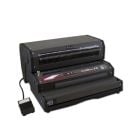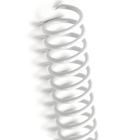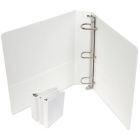How to Design a Fundraising Cookbook
Cookbooks are tried and true fundraisers for organizations of all types. Here are a few tips for designing and putting together a great one.
The Cover:
There are many ways to go about choosing and designing a cover for your fundraising cookbook. If you are working with a small or online publishing company, they may have a stable of cover templates that you can use. However, you will probably want to use something that conveys the feel of your organization a little better, such as a logo or an original photo or artwork. If you are lucky enough to be working with a designer within your organization, you can discuss with him or her what your options might be. If you are still stuck, you can always revert to a little bit of imitation. Take a look around at some of the cookbook covers that seem to really work for you, and do what you can to implement some of the aspects of the cover (without outright stealing ideas, of course). The professionals call this "design study" and it is very much a legitimate part of the design world, so dig in and see what you find.
The Dividers:
A lot of cookbooks (depending on how they are bound) rely on a system of dividers to enhance usability my making the sections easy to find without having to refer to a table of contents or the like. Types of binding styles that can easily accommodate dividers are: plastic comb, spiral coil, and double loop binding. You don't often see divider systems being used in hardcover (also known as thermal) style binding, as the index tabs would likely stick out beyond the cover of the book.
The divider pages are also a great place to put some artwork, such as a nice photograph of one of the finished dishes and the title of the section. Again, there may be templates for these at your publishers, but if you are publishing the book yourself, or want to do something a little more original, consult with your designer or do some research yourself.
Page Layout:
For the typical recipe page, you will want to keep graphics to a minimum in favor of readability and functionality. Leave the fancy graphics to the chapter headers and cover. Again, if you need a little bit of help when it comes to layout, take a look around at other cookbooks that you feel are easy to use as well as attractive on the page.
You will also want to have some introductory pages and perhaps short bios of the main officers of your organization. A table of contents would be a nice addition as well, along with a title page and perhaps a short history about your organization and the work that it does.
Binding Style:
As stated above, three great binding styles commonly seen in cookbooks are" plastic comb, spiral coil, and double loop wire binding. All of these styles allow the book to open flat for easy functionality in the kitchen, and are fairly rugged systems that keep the pages together well. If your organization has one of these binding machines on hand, you can even bind the books yourself. If not, you can go to your local printer, or buy an inexpensive binding machine.









